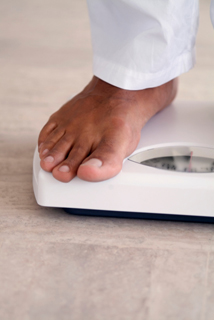Dr. G. tackles the tough questions
Permanent link

Do you have a friend that works out a little too much? What about a super skinny-mini friend that complains her non-existent butt is too big? And we all have at least one family member that’s a calorie counting, label reading, point tracking, lifelong dieter. Jokes aside, body image issues are on the rise, so I interviewed an expert, Kate Goldhaber, PhD. A licensed clinical psychologist who works as a staff psychotherapist at Chicago Behavioral Health, LLC, and is an affiliate therapist at The Family Institute at Northwestern University, Dr. Goldhaber works with adolescents, adults, couples and families. She has expertise in treating depression, anxiety, body image, weight, and eating disorders. I had a chance to chat with Dr. Goldhaber about body image and food addiction issues:
Ron Krit: Why do so many people think they are fat when they are not?
Dr. G: Probably because our beauty ideals are so unrealistic. Beautiful women in the media are typically underweight (often meet criteria for anorexia) and airbrushed. Consequently, women begin to associate beauty with perfection. When they don't measure up, they begin to denigrate their bodies and develop unrelenting dissatisfaction. It's not just the media who are to blame, though. Unfortunately women internalize these standards and subject themselves and their peers to them. Research has found that women are much harsher critics of weight and shape than men are.

Dr. Goldhaber
What are ways to improve your body image?
The first thing is to become an educated consumer. You have to understand that the beauty industry is designed to make you feel bad about your looks so that you will consume products ranging from diet pills to "slimming" clothes and plastic surgeries. Advertisements are designed to manipulate you, so be aware of that and check your reactions. Similarly, fight the urge to emulate the models and instead support "normal" women and reinforce natural beauty. The industry won't change if women keep supporting it.
Second, try to think of your body as something other than a beauty object. Your body is functional! Focus on its utility and fitness. Think about becoming strong and healthy rather than simply attractive. Along those lines, think about eating for fuel and functionality. Healthful food doesn't just mean low calorie. What does your body crave, and what will help you feel strong, healthy and energized?
Third, try to recondition yourself to think positively, or at least neutrally, about your body. Practice taking a non-judgmental stance about perceived "problem areas" by generating descriptive rather than evaluative terms. For example, if you feel negatively about your stomach, try generating descriptions such as "round" or "soft" to replace negative evaluations such as "flabby." Then, when you find yourself using the negative words, mentally override them with the neutral or positive ones. This process can actually change your thinking and emotions over time.
Why is important to see yourself in a positive light?
You could be in "perfect" shape according to fitness and/or beauty standards, but if you are still unsatisfied with yourself it will negatively impact your psychological adjustment, social functioning, sexual functioning, and relationship quality. In other words, your perception of yourself is more important to your functioning than any "real" or "objective" assessment of your body. When women lose weight but retain a negative body image, they may receive positive feedback from others but have trouble truly taking it in.
This is similar to what you said about viewing yourself in a positive light, but can you discuss how viewing yourself as the “fat friend” or the “fat one in the family” is damaging to weight loss?
It sounds like what you are talking about is particular roles and patterns that people can get into. If you are dissatisfied with your appearance, you might focus more on other strengths and identities such as your intelligence, humor, creativity, etc. When you lose weight or make changes in appearance, it can be disorienting to receive different kinds of feedback or attention from people. You might feel uncomfortable and unprepared when receiving positive attention for your appearance. You might doubt whether others genuinely like you, or are instead responding to superficial changes. You might even resent people who give you attention and think that they should have found you appealing before you altered your appearance. All of these thoughts and expectations can complicate the process of changing and maintaining weight loss. It might feel easier to continue in the roles that you have established.
What is food addiction/How do you know if you have that problem?
This is a difficult question. When we consider whether people are addicted to other substances, the criteria usually involve developing tolerance and dependency, structuring your life around obtaining the substance, etc. In that sense, all humans are addicted to food! We need it to survive, and we quickly go into withdrawal without food or liquids. When people talk about food addiction or having an unhealthy relationship with food, I think they're typically referring to eating (or not eating) for the "wrong" reasons. That is, instead of eating when hungry and stopping when full, they eat due to social or emotional cues. For example, some people use food for emotional soothing - hence the term "comfort food." If you often have the experience of eating when you're not hungry, feeling dissociated (amnesia eating) or out of control while eating, and feel confused or regretful about it afterwards, you might be an emotional eater. In this case, it's useful to identify alternative strategies for dealing with your emotions.
If you have any tough questions for Dr. Goldhaber, let me know and I will pass them on.




.jpg)



